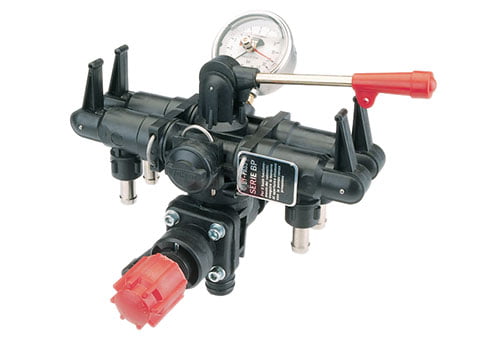
Maximize Power Savings and Convenience With Advanced Building Automation Controls
In the realm of modern-day style and center management, the combination of advanced structure automation controls stands as an essential innovation. By harnessing the power of automation, structures can adapt, react, and advance in ways that were once inconceivable.
Power Efficiency Perks
Power performance benefits can significantly reduce power usage and operational prices in buildings. Energy-efficient systems, such as innovative building automation controls, can optimize the usage of resources like lights, home heating, and cooling, leading to reduced energy expenses over time.
In addition, improved power effectiveness can lengthen the life expectancy of building tools and systems. By operating extra successfully, HVAC systems, lighting fixture, and various other building components experience much less deterioration, resulting in lowered upkeep and substitute expenses. In addition, energy-efficient structures usually command higher building values and rental prices, providing long-lasting economic benefits to owners.
Moreover, power efficiency can boost resident convenience and efficiency. Properly controlled interior settings with optimal lights and thermal conditions develop an even more helpful and positive workspace, causing boosted employee complete satisfaction and efficiency. On the whole, the energy efficiency benefits connected with sophisticated structure automation controls are complex, encompassing cost financial savings, environmental stewardship, and occupant well-being.
Improved Convenience Control
Enhancing convenience control in structure atmospheres requires a sophisticated assimilation of innovative automation systems for optimum owner wellness. By making use of advanced building automation controls, facilities can tailor the interior setting to fulfill the specific needs and preferences of occupants. These systems enable exact policy of lighting, ventilation, and temperature level, producing a efficient and comfortable atmosphere. Passenger contentment and efficiency are closely linked to thermal convenience, making it necessary to have systems in location that can adapt to changing problems in real-time.
Improved comfort control surpasses standard temperature adjustments. It consists of features such as customized setups, occupancy sensors, and natural light application to develop a vibrant and receptive setting. By integrating these advanced controls, buildings can not just boost comfort but likewise improve power performance by maximizing system procedures based on real occupancy and usage patterns. Ultimately, prioritizing owner comfort via advanced automation systems brings about a much more enjoyable and much healthier interior atmosphere.
Functional Efficiency Improvements

Furthermore, the implementation of real-time monitoring and analytics devices allows building drivers to identify energy ineffectiveness and functional anomalies promptly. By constantly keeping track of energy use patterns and system efficiency metrics, modifications can be made in real-time to maximize power consumption and make sure peak operational effectiveness. control valves. Additionally, integrating demand response techniques right into building automation controls can even more improve operational efficiency by dynamically readjusting power use based upon grid problems and rates signals
Indoor Environment Optimization
Efficient look here interior environment optimization is an essential aspect of building automation controls, making certain passengers' convenience and well-being while taking full advantage of power financial savings. By making use of sophisticated sensors and controls, constructing automation systems read this article can continuously keep track of and readjust temperature, humidity levels, air high quality, and ventilation to develop an optimum indoor setting. Preserving comfortable and consistent problems not only boosts resident fulfillment however additionally boosts productivity and general wellness.
Indoor climate optimization likewise plays a crucial function in power effectiveness. By fine-tuning heating, air flow, and air conditioning systems based upon real-time information and occupancy patterns, constructing automation controls can dramatically minimize energy intake - control valves. As an example, applying methods such as demand-controlled ventilation and thermal zoning can assist minimize power waste while guaranteeing that each location of the building gets the necessary conditioning.

Sustainable Environment Creation
Building automation manages not just maximize indoor environment conditions for energy performance and resident convenience yet additionally lay the structure for creating a sustainable atmosphere through strategic monitoring of systems and resources. By integrating advanced building automation modern technologies, such as sensors, actuators, check here and smart software, facilities can adjust and check energy use in real-time to lessen waste and decrease their carbon impact. These systems make it possible for predictive upkeep, identifying potential issues before they intensify and optimizing tools performance to improve longevity and effectiveness.
Furthermore, lasting atmosphere production extends past energy monitoring to encompass water conservation, waste decrease, and interior air high quality enhancement. Building automation controls can manage water use, spot leaks, and ensure correct waste disposal techniques, adding to total sustainability efforts. Furthermore, by managing and keeping an eye on ventilation and filtering systems, these technologies enhance owner health and performance while reducing energy intake related to a/c procedures.
Verdict
Finally, advanced structure automation regulates offer considerable advantages in regards to power savings, comfort control, operational efficiency, indoor climate optimization, and developing a lasting environment. By applying these controls, structures can attain optimum efficiency while decreasing power usage and improving resident comfort. It appears that making use of advanced automation technology is essential in enhancing structure performance and developing a much more sustainable future.
Energy effectiveness advantages can substantially minimize power usage and functional costs in structures. On the whole, the power efficiency advantages associated with innovative structure automation controls are diverse, including price savings, environmental stewardship, and resident health.
Additionally, integrating need feedback techniques right into building automation controls can additionally improve operational performance by dynamically changing power use based on grid conditions and prices signals.
Building automation regulates not just maximize indoor environment problems for power effectiveness and occupant comfort but also lay the structure for developing a sustainable environment with tactical monitoring of systems and resources.In verdict, advanced structure automation manages deal significant benefits in terms of energy savings, convenience control, functional efficiency, indoor climate optimization, and developing a sustainable environment.